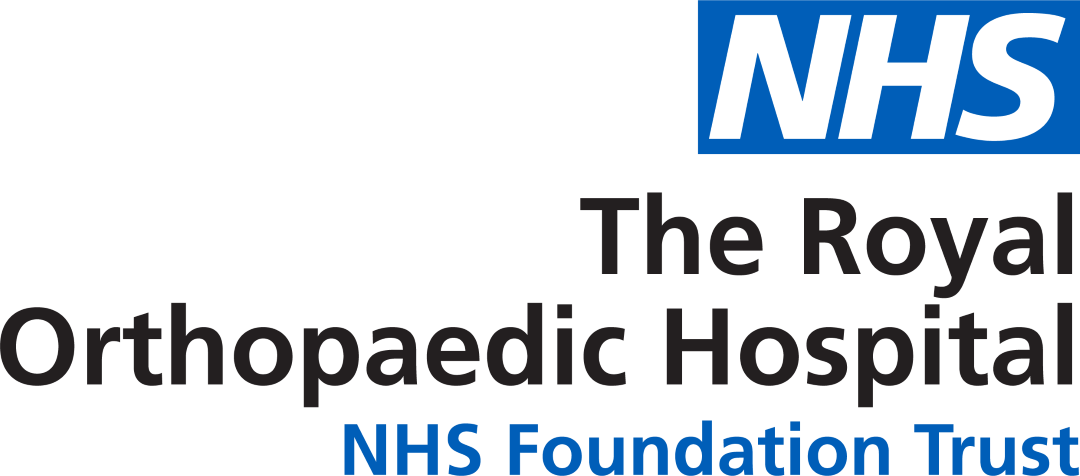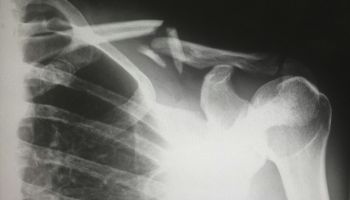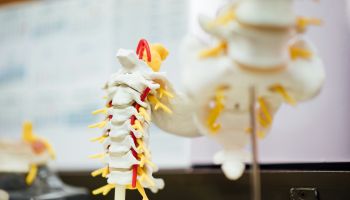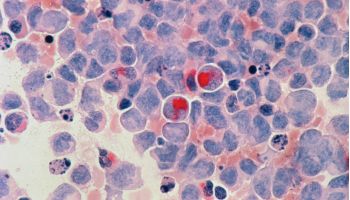Research
Explore the latest MSK research from the Royal Orthopaedic Hospital
Research and Training at ROH
The Royal Orthopaedic Hospital is a teaching and research hospital. We deliver extensive research across a vibrant mix of clinical trials, observational studies and laboratory studies, working in partnership with world-leading industry partners to ensure our patients have access to the latest innovations in orthopaedic care.
Our state-of-the-art Dubrowsky Regenerative Medicine Laboratory boasts a tissue culture lab and analytical lab including high throughput microscopy. The laboratory is based in our Theatre department enabling close collaboration between our research team and surgical teams.
We work in partnership with the University of Birmingham (UoB) and Aston Medical School (AMS) to support their medical student training. Each year up to 480 UoB fourth-year medical students and 120 AMS third-year medical students complete a two-week musculoskeletal placement at the Royal Orthopaedic Hospital. The 120 AMS medical students also complete a five-day peri operative medicine placement at the Royal Orthopaedic Hospital.
The Royal Orthopaedic Hospital also hosts the Birmingham Orthopaedic Training Programme (BOTP), one of the largest and most successful orthopaedic training programmes in the UK. The BOTP comprises 40 trainees rotating through 12 hospitals across the West Midlands, all of which are committed to training. The ROH hosts weekly teaching sessions, with 17 registrars rotationally working and learning with the Trust whilst delivering great patient experience and outcomes.
Research highlights
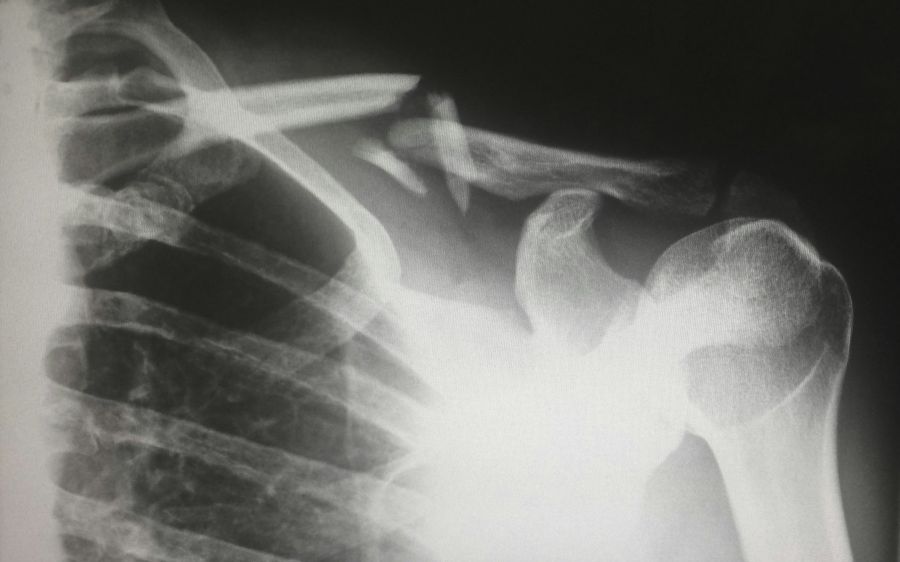
Do we need radiotherapy following surgery for pathological fractures on metastatic bone cancer patients?
Consultants at The Royal Orthopaedic Hospital NHS Foundation Trust are at the forefront of research into whether intervening with radiotherapy immediately following surgery to treat pathological fractures reduces pain significantly, compared to no intervention. This is being undertaken as part of the PORTRAIT trial (Post Operative Radiotherapy in Surgically Treated Bone Metastases), a multi-centre study funded by the National Institute for Health and Care Research (NIHR). The PORTRAIT trial is sponsored by the Royal Orthopaedic Hospital and is led by Chief Investigator Mr Jonathan Stevenson, Orthopaedic Oncology Consultant.
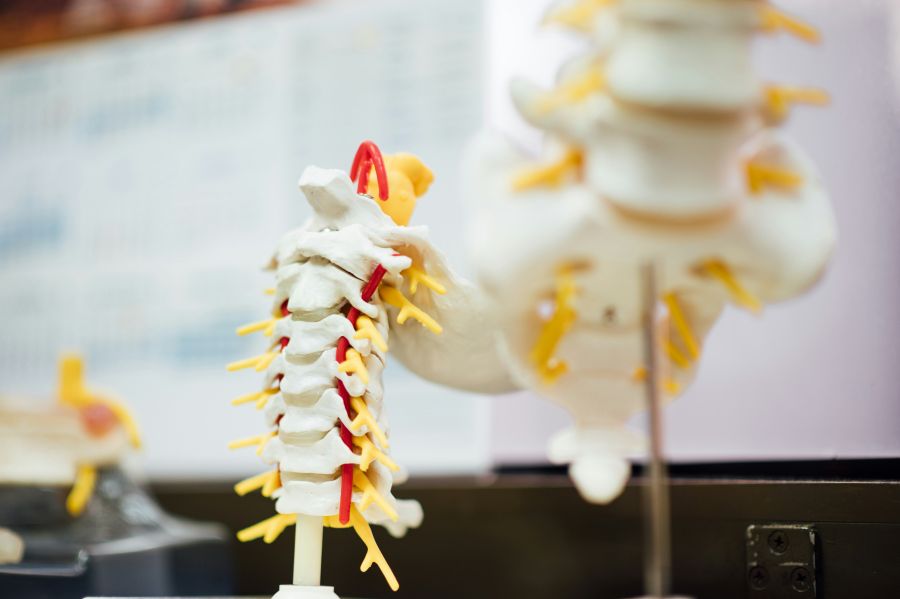
A Protocol of Accelerated Rehabilitation following surgery for adolescent Idiopathic Scoliosis (PARIS) - a feasibility study
Almost 50% of adolescents who undergo surgery for adolescent idiopathic scoliosis (AIS) do not return to their preoperative levels of physical activity. Considering the potential long-term impacts of surgery, testing postoperative physiotherapy interventions should be a priority in this group. While metalwork used in scoliosis surgery has moved on over the decades, physio rehab guidance has not improved in tandem for these patients. This study aimed to evaluate the feasibility of a future randomized controlled trial (RCT), which compares the effectiveness of an accelerated physiotherapist-led rehabilitation protocol to standard care for patients following surgical correction of AIS.
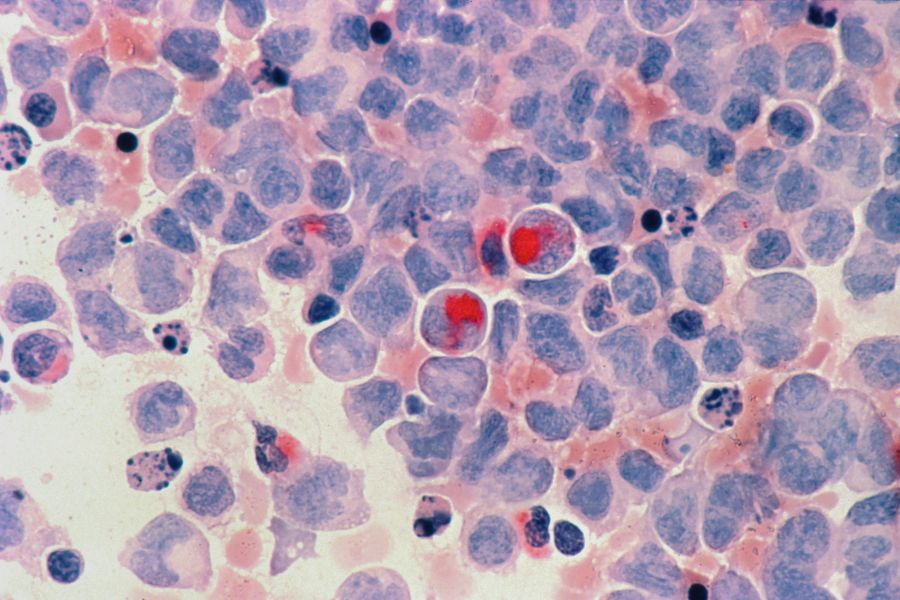
A Protocol of Accelerated Rehabilitation following surgery for adolescent Idiopathic Scoliosis (PARIS) - a feasibility study
Cancer care guidelines have been developed in many subspecialities, usually in advanced health systems. However, there are notable global disparities in healthcare access, which can impact sarcoma care. Unfortunately, there is a lack of global data on this subject. The aim of this study was to describe access to sarcoma care based on a comprehensive global survey among orthopaedic oncologists, and assess for global as well as regional differences, to understand its impact on clinical outcomes globally.
2025
Arthroscopic iliopsoas release following hip arthroplasty surgery: a successful procedure but beware of instability!
Hip International, 2025
This retrospective study reviewed outcomes of arthroscopic iliopsoas release for persistent groin pain due to iliopsoas impingement following total hip replacement (THR). Among 29 hips assessed, 75.8% of patients experienced either complete or significant symptom relief at 12 months postoperatively. However, 10.3% experienced anterior dislocation, highlighting the risk of postoperative instability. The authors advise caution with capsular resection and early physiotherapy to minimize this complication.
A Protocol of Accelerated Rehabilitation following surgery for adolescent Idiopathic Scoliosis (PARIS): a feasibility study
Bone & Joint Open, 2025
This feasibility study evaluated a future randomized controlled trial (RCT) comparing an accelerated physiotherapist-led rehabilitation to standard care after surgery for adolescent idiopathic scoliosis (AIS). Among 23 recruited participants, 20 completed the study with good treatment adherence (76%) and no adverse events. Retention was 70% at six months and 65% at 12 months. The study concluded that the accelerated rehab protocol is safe and feasible, recommending further development with patient involvement to improve retention and adherence for a full-scale RCT.
From fat to flame: Multi-omic insights into how adipose-joint crosstalk stokes the fires of osteoarthritis
Osteoarthritis Cartilage, 2025
This study examined the inflammatory profiles of different adipose tissues in osteoarthritis (OA) patients, comparing joint-associated fat (infrapatellar fat pad [IFP] and sub-synovial adipose tissue [SSAT]) to subcutaneous fat (SCAT). RNA sequencing and proteomics revealed that IFP and SSAT have distinct, pro-inflammatory and metabolically active profiles, influencing joint cell behaviour through secreted factors. Key inflammatory and metabolic regulators were shared across tissues and linked to changes in synovial fibroblasts, osteoblasts, and chondrocytes. The findings suggest joint adipose tissue actively contributes to OA pathophysiology, highlighting potential therapeutic targets, though further in vivo validation is needed.
Improving oncological outcomes for pelvic bone sarcomas: Is it possible?
European Journal of Surgical Oncology, 2025
A retrospective study of 475 patients with pelvic bone sarcomas compared outcomes between 2003–2012 and 2013–2022. Increased use of surgical navigation and patient-specific planning in the modern cohort led to fewer positive surgical margins and improved disease-specific survival (DSS) for chondrosarcoma and chordoma. Local recurrence-free survival (LRFS) also improved for chondrosarcoma, Ewing sarcoma, and chordoma. However, no significant DSS improvement was seen for osteosarcoma or Ewing sarcoma. The study highlights advances benefiting some sarcoma types but underscores the need for continued innovation, especially for osteosarcoma and Ewing sarcoma.
Identifying consensus and areas for future research in chondrosarcoma : a report from the Birmingham Orthopaedic Oncology Meeting
Bone and Joint Journal, 2025
The Birmingham Orthopaedic Oncology Meeting (BOOM) 2024 brought together 309 delegates from 53 countries to develop consensus statements on the management of chondrosarcoma. Using a modified Delphi process, strong consensus (>80%) was reached on 19 of 21 statements, covering diagnosis, surveillance, recurrence, and dedifferentiated disease. Key agreements included that routine chemotherapy is not indicated and radiological surveillance is safe for intraosseous cases. Areas of ongoing debate include the management of atypical cartilage tumours and surgical margins. BOOM provides the largest global consensus to date on chondrosarcoma care, aiming to guide practice and inform future research.
Enhancing surgical margins: A key to survival in pelvic chondrosarcoma
European Journal of Surgical Oncology, 2025
This retrospective study of 216 patients with pelvic chondrosarcoma compared outcomes across two decades (2003–2012 vs. 2013–2022). The modern cohort showed significant improvements in disease-specific survival (DSS) and local recurrence-free survival (LRFS), attributed to advances in imaging, navigation-assisted surgery, tumour mapping, and multidisciplinary care. However, dedifferentiated chondrosarcoma continues to have poor outcomes, highlighting a need for targeted research and innovative treatments for this aggressive subtype.
Long-term Outcomes of Biological Reconstruction for Primary Bone Sarcoma of the Humerus
Cancer diagnosis & Prognosis, 2025
This study assessed outcomes of biological reconstruction after humeral bone sarcoma resection in 23 patients. Four reconstruction techniques were used, primarily involving vascularized and non-vascularized fibular grafts. Despite complications such as graft fractures, non-union, and peroneal nerve palsy, oncological outcomes were favourable, with 22 of 23 patients surviving and good functional results (mean MSTS score: 78.9%). The study concludes that biological reconstruction is complex but offers effective oncological control and functional preservation.
The genomic analysis of patients with musculoskeletal metastases from an unknown origin
Surgical Oncology Journal, 2025
This pilot study explored the use of targeted Next Generation Sequencing (NGS) in patients with musculoskeletal metastases and no known primary tumour (Cancer of Unknown Primary, CUP). Among 19 patients, 95% had clinically significant genetic variants, with 42% eligible for clinical trials and 16% showing actionable therapeutic or prognostic variants. Median survival was 15 months, with improved outcomes seen in patients referred to tumour-specific multidisciplinary teams. The study suggests that real-time genomic analysis can guide diagnosis and treatment, offering potential survival benefits for this high-risk group. Larger studies are recommended.
2024
Quantifying radiation exposure in the radiological investigation of non-arthritic hip pain
Journal of Hip Preserving Surgery, 2024
This study quantifies radiation exposure from common imaging techniques used to assess non-arthritic hip pain. A retrospective review found that CT scans deliver significantly higher radiation doses (mean ED 3.04 mSv) compared to plain radiographs (0.03–0.83 mSv). Given this, the authors recommend a routine protocol of using AP pelvic radiographs followed by MRI, which typically provides sufficient diagnostic information. CT imaging should be reserved for complex cases. The study urges the hip preservation community to minimize unnecessary radiation exposure by critically evaluating the use of ionizing imaging methods.
Lumbar spine fusion surgery versus best conservative care for patients with severe, persistent low back pain
Bone & Joint Open, 2024
A UK survey of clinicians managing severe, persistent low back pain (LBP) revealed uncertainty about the role of lumbar spine fusion surgery versus best conservative care (BCC). Most preferred conservative treatment initially, but over half were willing to randomize patients into a future trial comparing surgery and BCC. Transforaminal interbody fusion was the favored surgical approach, while combined physical and psychological therapy was preferred for BCC. The findings support the need for a randomized trial to clarify treatment effectiveness.
Promotion of sports, exercise and physical activity participation during postoperative interventions for adolescent idiopathic scoliosis: protocol for an international e-Delphi study
BMJ Open, 2024
This study aims to establish a consensus on safe and effective return-to-sport guidelines for adolescents following spinal fusion surgery for adolescent idiopathic scoliosis (AIS). While physiotherapists play a key role in post-op rehabilitation, there is currently limited evidence and global variation in practice. Using a Delphi method involving international experts, the study will identify rehabilitation milestones and outline a graded return to sports and physical activity. The process will follow CREDES guidelines and include input from clinicians, researchers, and patients across three iterative survey rounds.
What factors influence pain scores following Corticosteroid injection in patients with Greater Trochanteric Pain Syndrome? A systematic review
BMC Musculoskeletal Disorders, 2024
This systematic review examined factors influencing pain outcomes after corticosteroid injections (CSI) in patients with Greater Trochanteric Pain Syndrome (GTPS). Across 8 studies (643 participants), demographic factors (age, sex, symptom duration, obesity) were not linked to pain improvement. However, patients with co-existing musculoskeletal conditions had poorer pain outcomes. Injections into the Greater Trochanteric Bursa provided longer-lasting relief than other sites. Image-guided injections helped reduce pain at six months but did not extend the overall therapeutic effect. Ultrasound findings were not predictive of pain outcomes. Further research is recommended.
ICON 2020-International Scientific Tendinopathy Symposium Consensus: the development of a core outcome set for gluteal tendinopathy
British Journal of Sports Medicine, 2024
This study developed an interim Core Outcome Set for Gluteal Tendinopathy (COS-GT) to improve consistency in outcome measurement for clinical practice and research. A scoping review and two surveys involving 34 health professionals and 7 patients identified and evaluated 57 existing measures against nine core tendinopathy domains. No single measure met all criteria, so interim measures were agreed upon, including: global rating of change, night pain, time to pain onset during single-leg stance, stair pain, pain self-efficacy, and hip abduction strength. Additional recommended measures for trials include pain over the past week, EQ-5D-5L, and VISA-G.
Immunomodulation and fibroblast dynamics driving nociceptive joint pain within inflammatory synovium: Unravelling mechanisms for therapeutic advancements in osteoarthritis
Osteoarthritis Cartilage, 2024
This review explores how cellular interactions in inflamed synovium—particularly between immune cells, synovial fibroblasts, and joint nociceptors—contribute to pain sensitisation in osteoarthritis (OA). It highlights the role of pro-inflammatory signalling in driving joint pain and suggests that understanding these mechanisms could lead to the development of more effective, targeted analgesics for OA. The study also draws insights from similar joint conditions to inform future research and therapy development.
Therapeutic avenues in bone repair: Harnessing an anabolic osteopeptide, PEPITEM, to boost bone growth and prevent bone loss
Cell Reports Medicine, 2024
Current bone disease treatments mainly prevent bone loss but don’t promote new bone formation. This study identifies PEPITEM, a natural osteopeptide with anabolic effects that stimulates osteoblast maturation and bone formation via NCAM-1 signaling, while also reducing bone resorption by enhancing osteoprotegerin release. In mouse models of osteoporosis and arthritis, PEPITEM halted bone loss and promoted repair. It also stimulated bone growth in human osteoblast samples, offering a promising dual-action therapy for conditions involving excessive bone loss.
The ROSA robotic-arm system reliably restores joint line height, patella height and posterior condylar offset in total knee arthroplasty
The Knee, 2024
This study assessed the accuracy of implant positioning using the ROSA® robotic system in total knee arthroplasty (TKA), focusing on joint line height, patella height, and posterior condylar offset (PCO). In 100 consecutive cases, there were no significant changes between pre- and post-operative measurements, and no differences were found between image-based vs. imageless workflows or between implant designs (Persona vs. Vanguard). The findings support the precision of the ROSA® system in restoring key anatomical landmarks during TKA.
Robotic trials in arthroplasty surgery
Bone and Joint Journal, 2024
While total hip and knee arthroplasty (THA, TKA) are generally successful, some patients remain dissatisfied. Robotic-assisted surgery is being explored to improve outcomes, but robust evidence is needed. The RACER trials are multicentre, patient-blinded randomised controlled trials comparing Mako-assisted THA/TKA with conventional surgery in patients with osteoarthritis. The primary outcome is the Forgotten Joint Score at 12 months, with secondary measures including pain, implant alignment, and cost-effectiveness. The study also highlights challenges in trial design, such as blinding, workflow integration, and the learning curve, emphasizing the need for ongoing evaluation of surgical technologies.
Staged revision of the infected knee arthroplasty and endoprosthesis
Bone & Joint Journal, 2024
This retrospective study reviewed 94 cases of infected knee prostheses treated with static antibiotic-loaded cement spacers (ABLCSs). A high complication rate (37.2%) was observed, mostly due to mechanical failures (74.3%) rather than infection recurrence. Key risk factors for spacer failure included short intramedullary spacer length (less than double the defect length), poor intraosseous contact, and use of a tibial tubercle osteotomy. Spacer-related complications significantly delayed the second-stage revision. The study emphasizes the importance of construct length and reinforcement to avoid failure and improve outcomes in PJI management.
A pictographic guide for decision making in surgery for pelvic bone sarcoma
Journal of Orthopaedics, 2024
Pelvic bone sarcoma surgery is complex due to challenging anatomy and high complication risks. Successful outcomes depend on multidisciplinary planning, experienced surgical teams, and achieving tumour-free margins. Reconstruction choices should be based on extent of resection, lesion location, and available expertise. Some isolated lesions may not require reconstruction. Options like pedestal cups, custom prostheses, or hip transposition can offer good results, especially post-radiotherapy. Navigation technology enhances margin accuracy, particularly in chondrosarcoma. Flap-based hindquarter amputation may be considered, but patients must be well-counselled on risks. The article provides decision-making flowcharts to guide pelvic sarcoma surgery.
Lower cell number, lateral defect location and milder grade are associated with improved autologous chondrocyte implantation outcome
Knee Surgery, Sports Traumatoloy, Arthroscopy (KSSTA), 2024
This retrospective analysis of 306 autologous chondrocyte implantation (ACI) procedures identified factors influencing patient-reported outcomes (Lysholm scores). Younger age, higher baseline Lysholm scores, fewer implanted cells, and lateral femoral defect location were associated with better short-term outcomes, while milder defect grade predicted better long-term results. Associated procedures did not negatively impact outcomes. Joint failure occurred in 24% of cases. These findings highlight key demographic and clinical variables that can help predict ACI success in real-world settings.
2023
Agreement on assessment and treatment of greater trochanteric pain syndrome (GTPS): an international consensus statement
Journal of Hip Preservation Surgery, 2023
The 2022 ISHA physiotherapy agreement on Greater Trochanteric Pain Syndrome (GTPS) presents a consensus on the assessment and management of GTPS, both surgical and non-surgical, from a physiotherapy perspective. Developed by a panel of 15 physiotherapists and 8 orthopaedic surgeons, the agreement addresses the lack of high-quality evidence in this area. Using a modified Delphi technique, the group—composed of experts in non-arthritic hip conditions—reached consensus on four key areas:
- Evaluation of GTPS
- Non-surgical physiotherapy management
- Use of corticosteroids and orthobiologics
- Surgical indications and post-operative physiotherapy management.
Barriers and facilitators of physical function, activity, sports and exercise in children and adolescents with spinal pain: a protocol for a systematic review and meta-ethnography
BMJ Open, 2023
This systematic review with meta-ethnography aims to explore the barriers and facilitators to exercise participation in adolescents with thoracic or lower back pain (LBP). It will also examine how these factors vary across different demographic groups under 18. Using Noblit and Hare's seven-phase approach, the review will analyse qualitative studies to generate theories about adolescent behaviour and inform future physiotherapy interventions and service provision. A comprehensive database and grey literature search will be conducted. No ethical approval was required, and findings will be shared via conferences and publications.
Factors Influencing Participation in Physical Activity, Sports, and Exercise in Children and Adolescents with Spinal Pain or Spinal Conditions: A Systematic Review and Meta-Ethnography
Behavioral Sciences (Basel, Switzerland), 2023
This meta-ethnographic review examined factors influencing physical activity participation in individuals aged 18 or under with spinal pain or conditions. Analysing nine qualitative studies (384 participants), three key themes emerged:
- Biological – physical limitations, bladder/bowel care
- Psychological – feelings of difference, emotional struggle, and acceptance
- Sociological – peer influence, social acceptance, and family dynamics
Sociological factors were the most significant barriers or facilitators. Adolescents over 14 provided more in-depth perspectives. Findings mainly apply to neuromuscular conditions, with more evidence needed in paediatric musculoskeletal spinal pain.
Physiotherapist-led exercise versus usual care (waiting-list) control for patients awaiting rotator cuff repair surgery: A pilot randomised controlled trial (POWER)
Musculoskeletal Science Practice, 2023
This pilot study assessed the feasibility of a future multi-centre RCT comparing a physiotherapist-led exercise programme to usual care for patients awaiting rotator cuff repair surgery. Among 302 eligible patients, 76 (25%) were randomised, with 74% in the exercise group receiving the intervention as planned. Follow-up response at 6 months was 67%, and 42% had not yet received surgery. The study concluded that a full RCT is feasible, but improvements in recruitment, treatment fidelity, and follow-up processes are needed. A fully powered trial is now warranted to assess clinical and cost-effectiveness.
Bracing Adolescent Idiopathic Scoliosis (BASIS) study - night-time versus full-time bracing in adolescent idiopathic scoliosis: study protocol for a multicentre, randomized controlled trial
Bone & Joint Open, 2023
This protocol outlines a randomized controlled trial comparing full-time versus night-time bracing in adolescents with idiopathic scoliosis (AIS). 780 participants aged 10–15 will be enrolled across UK paediatric spine clinics and randomly assigned to one of the two bracing regimens. The primary outcome is treatment failure (curve progression to ≥50° before skeletal maturity), assessed on a non-inferiority basis. Secondary outcomes include quality of life, adherence, psychological impact, and educational attainment. The study also includes a qualitative sub-study on family experiences, and all data will be collected via the British Spine Registry.
2022
What is the most appropriate method for the measurement of the range of motion in the lumbar spine and how does surgical fixation affect the range of movement of the lumbar spine in adolescent idiopathic scoliosis? A systematic review protocol
Systematic Reviews, 2022
This review aims to evaluate how spinal motion is measured and how it changes after surgical fixation in adolescent idiopathic scoliosis (AIS), depending on the anatomical level of surgery. Currently, motion restriction expectations are based on experience, not evidence, making pre-operative discussions challenging. Following PRISMA-P and COSMIN guidelines, the review will identify valid, reliable, and responsive methods of motion assessment, and analyse how motion is affected post-surgery. The findings aim to inform evidence-based patient guidance, though no direct patient involvement was included in the review's development.
A comparison of the post-fusion outcome of patients with early-onset scoliosis treated with traditional and magnetically controlled growing rods
Bone & Joint Journal, 2022
This retrospective study compared outcomes in early-onset scoliosis patients treated with either traditional growing rods (TGRs) or magnetically controlled growing rods (MCGRs) before spinal fusion. Both groups showed similar improvements in major curve correction and final spinal height. MCGR patients had fewer planned distractions and shorter intervals between them, but rates of unplanned surgeries due to complications were comparable between groups.
2021
Do the quadriceps and hamstring muscles have an effect on patella stability in trochlear dysplasia?
Polish Journal of Radiology, 2021
This study investigated whether thigh muscle imbalance contributes to patellofemoral joint (PFJ) instability in patients with trochlear dysplasia (TD). Analyzing muscle cross-sectional areas (CSA) in 196 knees (186 with TD), it found no statistically significant differences in muscle CSA—particularly between vastus medialis and vastus lateralis—across TD subtypes. However, a significant difference between quadriceps and hamstring CSAs was observed when compared to normal knees. Overall, the study concludes that gross muscle imbalance does not significantly affect PFJ stability in TD, and further research is needed to clarify muscular roles in patellar dislocation.
Carcinoma arising within sciatic nerve endometriosis: a case report
Journal of Surgical Case Reports, 2021
Endometriosis is a common condition with significant morbidity. There have been case reports of endometrial deposits affecting the sciatic nerve. Sciatic nerve endometriosis presents with cyclical sciatica and is often difficult to diagnose as it mimics many other causes of sciatica. This report describes the first known case of endometrial carcinoma arising within sciatic nerve endometriosis. Initial treatment with radiotherapy was insufficient, leading to surgical intervention for improved symptom control and prognosis.
Early-onset scoliosis patients treated with either traditional growing rods (TGRs) or magnetically controlled growing rods (MCGRs) before spinal fusion
This retrospective study compared outcomes in early-onset scoliosis patients treated with either traditional growing rods (TGRs) or magnetically controlled growing rods (MCGRs) before spinal fusion. Both groups showed similar improvements in major curve correction and final spinal height. MCGR patients had fewer planned distractions and shorter intervals between them, but rates of unplanned surgeries due to complications were comparable between groups.
2020
Acute Hamstring Muscle Tears in Climbers-Current Rehabilitation Concepts
Wilderness & Environmental Medicine, 2020
Acute hamstring injuries in climbers are often caused by the heel hook technique, which places high stress on the posterior thigh due to its unique demands. While eccentric strengthening is commonly used in rehab (based on sprinting/team sports), it may be insufficient for climbers, who also require significant concentric strength for this movement. This review evaluates current rehab strategies and presents a comprehensive, climbing-specific approach to managing hamstring injuries—from initial treatment to full return to sport.

